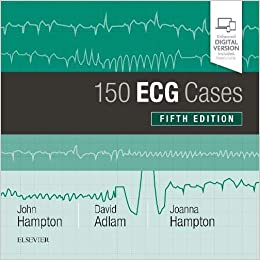Description
**Principles of Diabetes Mellitus**
Diabetes Mellitus (DM) is a chronic metabolic disorder characterized by elevated blood glucose (hyperglycemia) resulting from defects in insulin secretion, insulin action, or both. It is a complex condition with various underlying causes, but the key principles of its pathophysiology, diagnosis, and management can be broken down as follows:
### 1. **Insulin and Blood Glucose Regulation**
– **Insulin**: A hormone produced by the pancreas, primarily by beta cells in the islets of Langerhans. Insulin helps regulate blood glucose by promoting its uptake into cells for energy production and storage.
– **Glucagon**: A hormone released by alpha cells in the pancreas that works antagonistically to insulin, increasing blood glucose by promoting the release of stored glucose from the liver (glycogenolysis) and stimulating glucose production (gluconeogenesis).
– In a healthy individual, these hormones maintain blood glucose within a narrow range.
### 2. **Pathophysiology of Diabetes Mellitus**
Diabetes can be broadly classified into **Type 1** and **Type 2** diabetes, though there are other types, including gestational diabetes and forms due to specific genetic defects or endocrine diseases.
– **Type 1 Diabetes (T1DM)**:
– **Cause**: An autoimmune disease where the body’s immune system attacks and destroys the insulin-producing beta cells of the pancreas.
– **Result**: Insulin deficiency, leading to hyperglycemia. People with T1DM require exogenous insulin for survival.
– **Onset**: Usually develops in childhood or adolescence but can occur at any age.
– **Type 2 Diabetes (T2DM)**:
– **Cause**: A combination of insulin resistance (where cells in muscles, fat, and the liver do not respond properly to insulin) and eventual pancreatic beta-cell dysfunction.
– **Result**: Insulin resistance leads to hyperglycemia, and the pancreas compensates by producing more insulin until it can no longer keep up.
– **Onset**: Typically occurs in adulthood but can occur at any age, often linked to obesity, poor diet, and a sedentary lifestyle.
– **Gestational Diabetes (GDM)**:
– Occurs during pregnancy and is characterized by insulin resistance. GDM usually resolves after delivery, but women with a history of GDM are at higher risk of developing T2DM later in life.
– **Monogenic Diabetes and Other Specific Types**:
– Some forms of diabetes are caused by genetic mutations affecting insulin production or action, such as maturity-onset diabetes of the young (MODY).
### 3. **Diagnosis of Diabetes Mellitus**
Diagnosis is typically based on laboratory tests measuring blood glucose levels. Criteria for diagnosing diabetes include:
– **Fasting Plasma Glucose (FPG)**:
– ≥126 mg/dL (7.0 mmol/L) after at least 8 hours of fasting.
– **Oral Glucose Tolerance Test (OGTT)**:
– A 2-hour plasma glucose ≥200 mg/dL (11.1 mmol/L) during an OGTT, following a 75g glucose load.
– **Hemoglobin A1c (HbA1c)**:
– A level ≥6.5% (48 mmol/mol). This test reflects average blood glucose over the past 2-3 months.
– **Random Plasma Glucose**:
– ≥200 mg/dL (11.1 mmol/L) with symptoms of hyperglycemia (e.g., polyuria, polydipsia, unexplained weight loss).
### 4. **Symptoms of Diabetes**
– **Classic Symptoms**:
– **Polyuria** (increased urination)
– **Polydipsia** (increased thirst)
– **Polyphagia** (increased hunger)
– **Unexplained weight loss** (especially in Type 1 diabetes)
– **Fatigue**, blurred vision, and slow wound healing.
– **Complications**:
Chronic hyperglycemia can lead to both **microvascular** (e.g., retinopathy, nephropathy, neuropathy) and **macrovascular** complications (e.g., coronary artery disease, stroke, peripheral artery disease).
### 5. **Management of Diabetes Mellitus**
– **Type 1 Diabetes**:
– **Insulin therapy** is the cornerstone of treatment, with doses tailored to individual needs. Insulin regimens may include long-acting insulin for basal control and short-acting insulin for meals (prandial insulin).
– Continuous glucose monitoring (CGM) and insulin pumps are increasingly used for better glucose control.
– **Type 2 Diabetes**:
– **Lifestyle modifications** (diet, exercise, weight management) are essential.
– **Oral medications**: These may include metformin (first-line), sulfonylureas, DPP-4 inhibitors, SGLT-2 inhibitors, and GLP-1 receptor agonists.
– **Insulin** may be needed if oral medications fail to control blood glucose.
– **Other therapies**: In some cases, bariatric surgery may be indicated for those with obesity and severe insulin resistance.
– **Monitoring**:
– Regular monitoring of blood glucose levels (e.g., using home glucose meters or CGM).
– Regular A1c checks to assess long-term glucose control.
– Monitoring for complications, such as diabetic retinopathy, nephropathy, and neuropathy.
### 6. **Prevention of Type 2 Diabetes**
– **Lifestyle interventions**: Diet and exercise play a key role in preventing or delaying the onset of Type 2 diabetes in those at high risk.
– **Weight loss**: Even modest weight loss can improve insulin sensitivity.
– **Medications**: Metformin may be prescribed to those with prediabetes to reduce the risk of progressing to Type 2 diabetes.
### 7. **Acute Complications of Diabetes**
– **Diabetic Ketoacidosis (DKA)**: More common in Type 1 diabetes, DKA is caused by a severe insulin deficiency, leading to hyperglycemia, ketone production, acidosis, and dehydration.
– **Hyperosmolar Hyperglycemic State (HHS)**: More common in Type 2 diabetes, this condition is characterized by very high blood glucose levels without significant ketoacidosis, leading to severe dehydration and altered mental status.
– **Hypoglycemia**: Low blood glucose, often caused by insulin or oral hypoglycemic agents, can lead to symptoms ranging from shakiness to confusion or even loss of consciousness.
### 8. **Long-Term Complications of Diabetes**
Chronic hyperglycemia can lead to both microvascular and macrovascular complications:
– **Microvascular**:
– **Retinopathy**: Damage to the blood vessels in the retina, leading to vision impairment or blindness.
– **Nephropathy**: Kidney damage that can progress to renal failure.
– **Neuropathy**: Nerve damage, leading to pain, numbness, and loss of function, particularly in the feet.
– **Macrovascular**:
– **Cardiovascular disease**: Diabetes increases the risk of heart disease, stroke, and peripheral vascular disease.
### 9. **Lifestyle and Dietary Recommendations**
– A balanced diet with an emphasis on **low-glycemic index foods**, whole grains, lean proteins, healthy fats, and a limited intake of refined carbohydrates.
– **Physical activity**: Regular exercise improves insulin sensitivity and helps control blood glucose levels.
– **Weight management**: Maintaining a healthy weight is crucial, especially for those with Type 2 diabetes.
– **Blood pressure and lipid management**: Control of hypertension and dyslipidemia is key to reducing the risk of cardiovascular complications.






Reviews
There are no reviews yet.